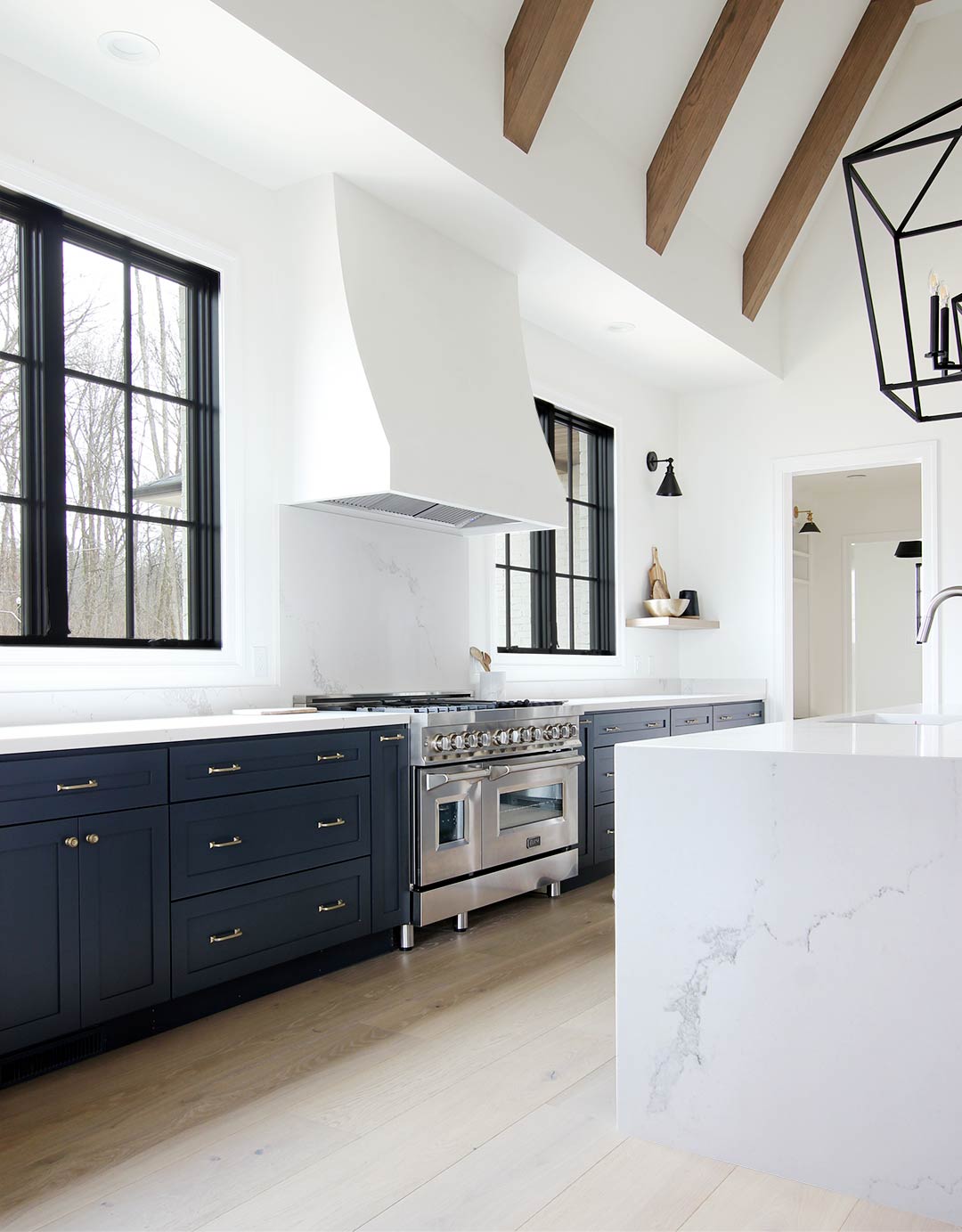If however the joists run parallel to the exterior wall you won t be able to run the ductwork straight out.
Running range hood ductwork through floor joists above.
If you are adding a new range hood over your stove and plan to vent it out through the roof you will need to get an adequately sized duct that will run all the way up through the ceiling into the attic and all the way up through the rooftop where it will be connected to your roof top vent.
The duct work was going to run through the joists in the ceiling and out.
The prior hood called for.
The ductwork is either 5 or 6 inches in diameter and even though most ceiling joists are 2 x 10s cutting a 5 or 6 inch diameter hole in either of these size joists.
The home is a daylight ranch so the kitchen is on the second top floor.
Exhaust duct run through the wall routes range hood exahust air down into the first floor joist cavity.
There was an under cabinet range hood before ducted through to the roof and it went through the drywall at an angle and somehow worked.
Mounting the bottom of the hood 6 0 above the floor so that taller individuals aren t constantly bumping their head and exposing the 4 hood extension the remaining mechanics can be concealed within a 12 high cabinet panel or a 16 cabinet panel if an 8 diameter duct is used.
The edge of the joist is 1 25 from the exact center of the 8 round duct.
But if i add a 5 booster fan would it be possible to retain proper air flow and route this duct through the joist.
Range exhaust ducts can be tricky to run through framing and out through a wall or the roof.
X 3 1 4 in.
Ducts should be able to run between studs in the wall and then turn into a joist bay the space between two joists.
I understand that the maximum size hole i can put through a 9 floor joist is 3.
And you can t cut holes in the joists for the ductwork either.
There is a large attic above.
Viking gas cooktop and i believe it is a 400 cfm hood.
We purchased a 36 quot.








